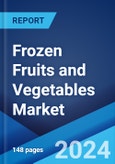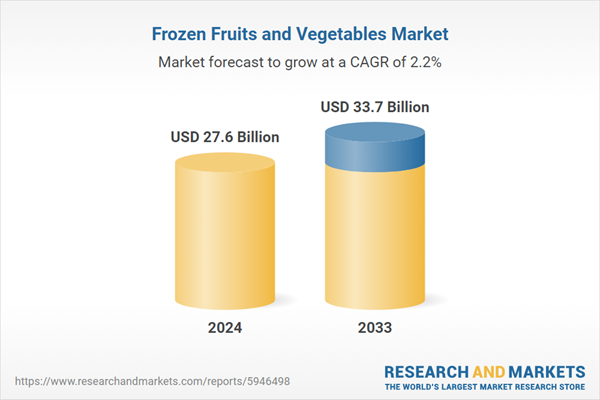Frozen fruits and vegetables are rapidly gaining traction among consumers as they offer a wide range of advantages over the fresh produce. The technique employed in freezing fruits and vegetables assists in retaining the color, flavor and nutritive value of these products. It slows down the decomposition by turning the residual moisture into ice, which prevents the growth of bacteria. Frozen fruits and vegetables are also immune to spoilage that occurs on account of vigorous transportation and exposure to light, heat and dust. They offer numerous benefits which include low cost, easy preparation and availability during the off-season.
Due to long working hours, rising health consciousness and the increasing prevalence of lifestyle diseases, consumers are shifting to frozen fruits and vegetables as they do not need to be washed, peeled or chopped. Additionally, they help in minimizing the overall cooking time without affecting the nutritional intake. In line with this, manufacturers are launching unique product variants, incorporating herbs and spices from local produce, to widen their portfolio and attract a large consumer base. Further, inflating income levels of the middle-class population, especially in the Asian countries, is impelling the market growth. Moreover, consumers currently prefer to shop online and pay through their credit/debit cards to eliminate geographical limitations. This, in confluence with the burgeoning e-commerce industry, is providing a thrust to the market growth.
Key Market Segmentation:
The publisher provides an analysis of the key trends in each sub-segment of the global frozen fruits and vegetables market report, along with forecasts at the global and regional level from 2025-2033. Our report has categorized the market based on product type and distribution channel.Breakup by Product Type:
- Frozen Fruits
- Frozen Vegetables
Breakup by Distribution Channel:
- Business-to-Consumer (B2C)
- Supermarkets/Hypermarkets
- Independent Retailers
- Convenience Stores
- Online
- Others
Based on the distribution channel, the market is dominated by the Business-to-Consumer (B2C) segment, wherein supermarkets/hypermarkets represent the leading subsegment.
Regional Insights:
- North America
- Europe
- Asia Pacific
- Latin America
- Middle East and Africa
Competitive Landscape:
The competitive landscape of the market has been analyzed in the report, along with the detailed profiles of the key players operating in the industry.Some of these key players include:
- Dole Food Company, Inc
- Ardo NV
- HJ Heinz
- Simplot Australia Pty. Ltd
- General Mills
Key Questions Answered in This Report
1. What was the size of the global frozen fruits and vegetables market in 2024?2. What is the expected growth rate of the global frozen fruits and vegetables market during 2025-2033?
3. What are the key factors driving the global frozen fruits and vegetables market?
4. What has been the impact of COVID-19 on the global frozen fruits and vegetables market?
5. What is the breakup of the global frozen fruits and vegetables market based on the product type?
6. What is the breakup of the global frozen fruits and vegetables market based on the distribution channel?
7. What are the key regions in the global frozen fruits and vegetables market?
8. Who are the key players/companies in the global frozen fruits and vegetables market?
9. What are the two factors to consider in marketing and selling of fruits and vegetables?
10. What is the industry analysis for frozen foods?
11. Why do frozen vegetables generally have a bad reputation?
Table of Contents
Companies Mentioned
- Dole Food Company Inc
- Ardo NV
- HJ Heinz
- Simplot Australia Pty. Ltd
- General Mills
Table Information
| Report Attribute | Details |
|---|---|
| No. of Pages | 127 |
| Published | January 2025 |
| Forecast Period | 2024 - 2033 |
| Estimated Market Value ( USD | $ 27.6 Billion |
| Forecasted Market Value ( USD | $ 33.7 Billion |
| Compound Annual Growth Rate | 2.2% |
| Regions Covered | Global |
| No. of Companies Mentioned | 5 |









